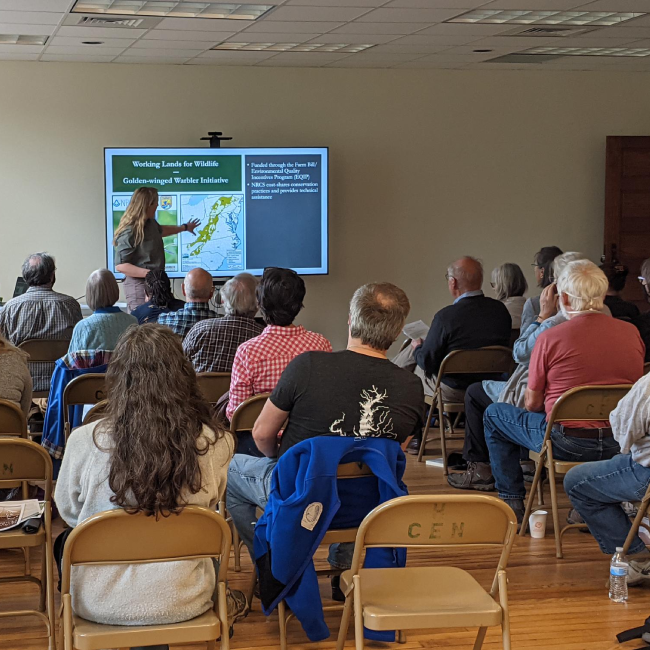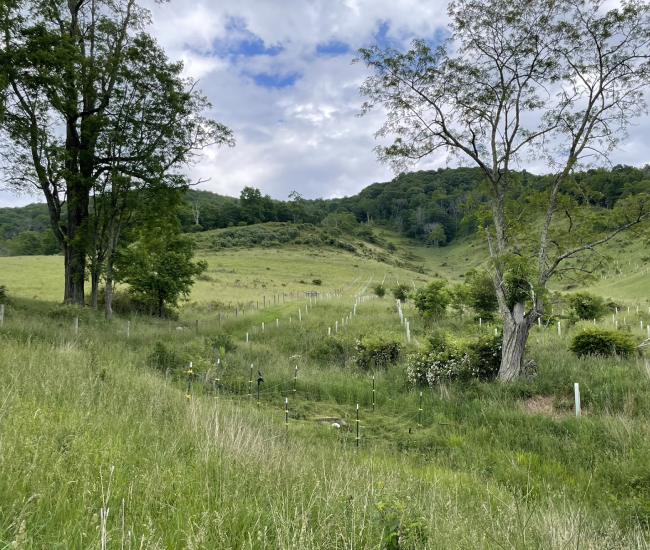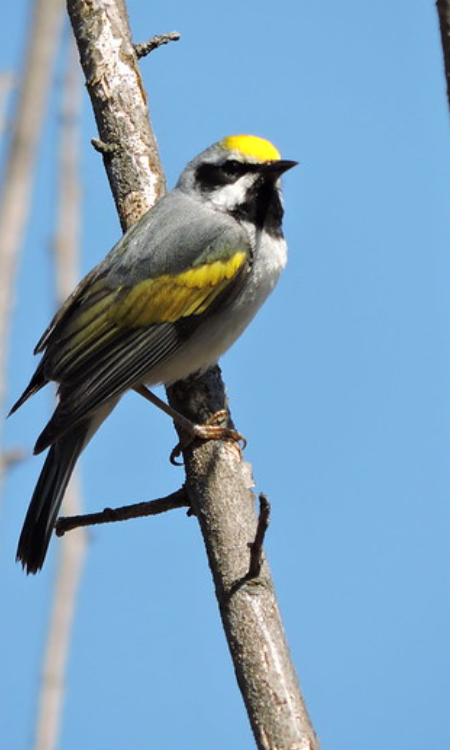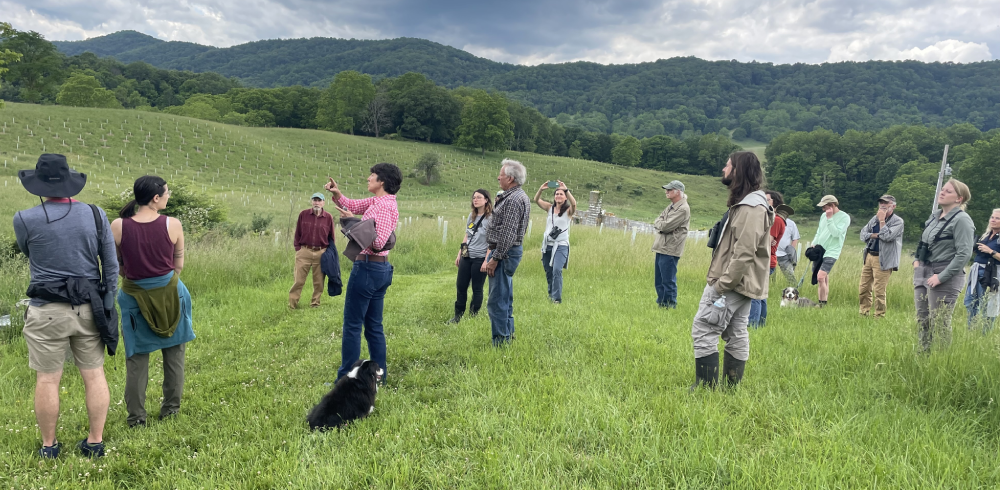In June, the Chesapeake Bay Foundation (CBF) hosted a program in Highland County, “Buffers for Birders,” where participants traveled from all over Virginia to learn more about the value of planting forested buffers for bird habitat restoration.
Countless avian species across Virginia benefit from streamside trees and shrubs, but the program focused on benefits to golden-winged warblers, a threatened species in the western Virginia highlands and throughout the Appalachians. These migratory songbirds breed in North America in late spring and summer before journeying to South America, where they spend the winter months. A mixture of trees, shrubs, grasses, and herbaceous plants, all within close proximity to hardwood deciduous forests and at elevations over 2,500 feet, are needed to support golden-wings, but such habitat complexity is also beneficial at lower elevations for other birds, including bobwhite quail.

After hearing presentations from avian ecologist and associate professor, Dr. Lesley P. Bulluck with Virginia Commonwealth University’s Center for Environmental Studies; and farmer, conservationist, educator, and award-winning writer Bobby Whitescarver, Buffers for Birders attendees were then educated about programs that can help landowners conserve and restore bird habitat in Virginia’s Valley and Ridge region.
There are many pathways for creating golden-wing habitat depending on the starting point (forest, shrubland, pasture). The James River Buffer Program is an especially great fit for landowners seeking to convert old fields or pastures adjacent to streams to a bird-friendly landscape. The program helps landowners plant native riparian hardwood trees but also can include smaller fruit-bearing trees and shrubs. Projects can be designed to establish better bird habitat, especially in places with low native tree and shrub diversity.

Wondering what species to plant in your buffer to support golden-winged warblers? White oaks, hickories, sugar maple, black cherry, and serviceberry are a few trees and shrubs that they prefer. For a list of fruit-bearing tree and shrubs recommended for more migratory songbirds as they fuel up on their journeys, check out, “Recommended Plantings for Migratory Songbird Habitat Management (PDF)”. This resource even contains the nutritional value for birds of each plant!
The James River Buffer Program’s flexibility also allows us to plant a higher density of trees near streams for water quality benefits and a lower density of smaller trees and shrubs further away from streams to mimic a soft forest edge. And by buffering smaller tributaries, we can create forested corridors that connect birds and other wildlife to mature upland forests.
If forest thinnings or other practices besides tree and shrub establishment is needed to develop golden-wing habitat, there is also funding available for landowners through the Natural Resources Conservation Service (NRCS)’s Environmental Quality Incentives Program (EQIP). You can contact Kristin Fuoco with USDA-Natural Resources Conservation Service (NRCS) at kristin.fuoco@usda.gov for more information.
Buffers for Birders concluded with a tour of a nearby farm in Highland County’s Big Valley. On this farm, showcasing over 20 acres of forested buffers that were recently installed through the James River Buffer Program, several golden-winged warblers were spotted earlier this year. Aside from installing buffers, the landowners fenced their livestock out of the streams and are treating invasive plant species that outcompete native vegetation needed by golden-wings and other wildlife in Highland County.

Another practice that benefits most birds is not mowing during their critical nesting season, which in Virginia is from early April through early September. Check out Bobby Whitescarver’s blog posts at “Getting More on the Ground,” for more tips on farming practices that attract and support birds.
With just a handful of landowners in Virginia supporting the local population of these rare warblers, Buffers for Birders taught us the vital role that specific conservation practices like tree and shrub plantings, forest thinnings, and invasive species management can play in the survival of a species. For more information on buffers and birds, contact Sarah Coffey with CBF at scoffey@cbf.org.
The Buffers for Birders program, along with CBF’s James River Buffer Program work in the Upper James, is funded through the Virginia Environmental Endowment.

